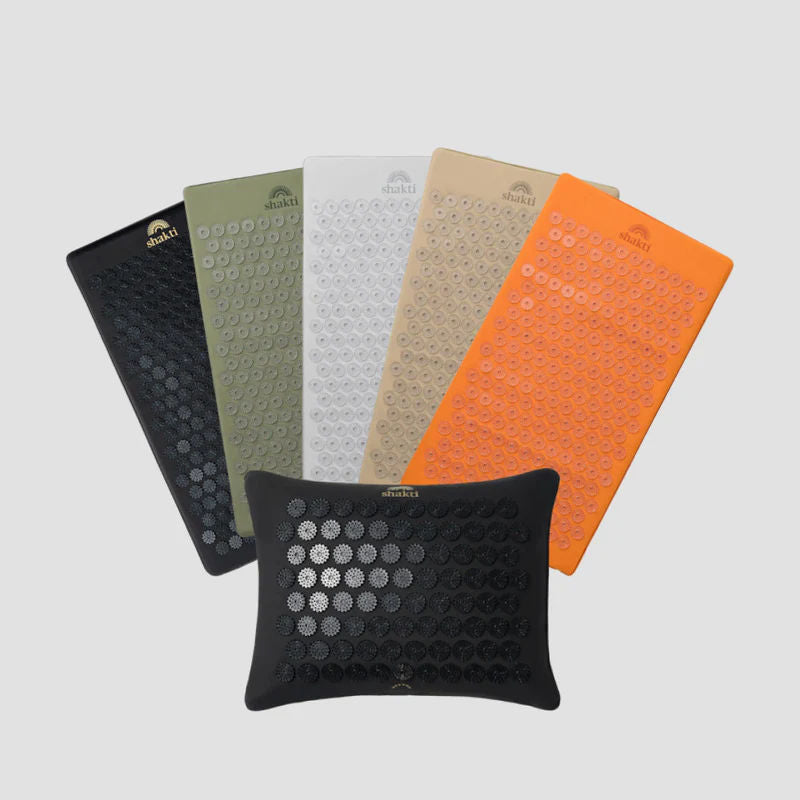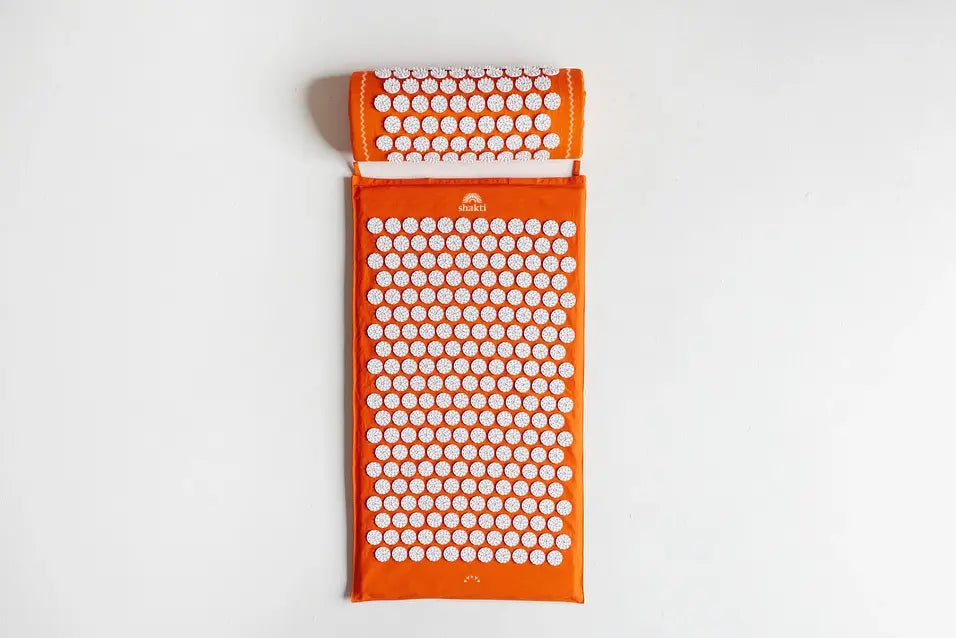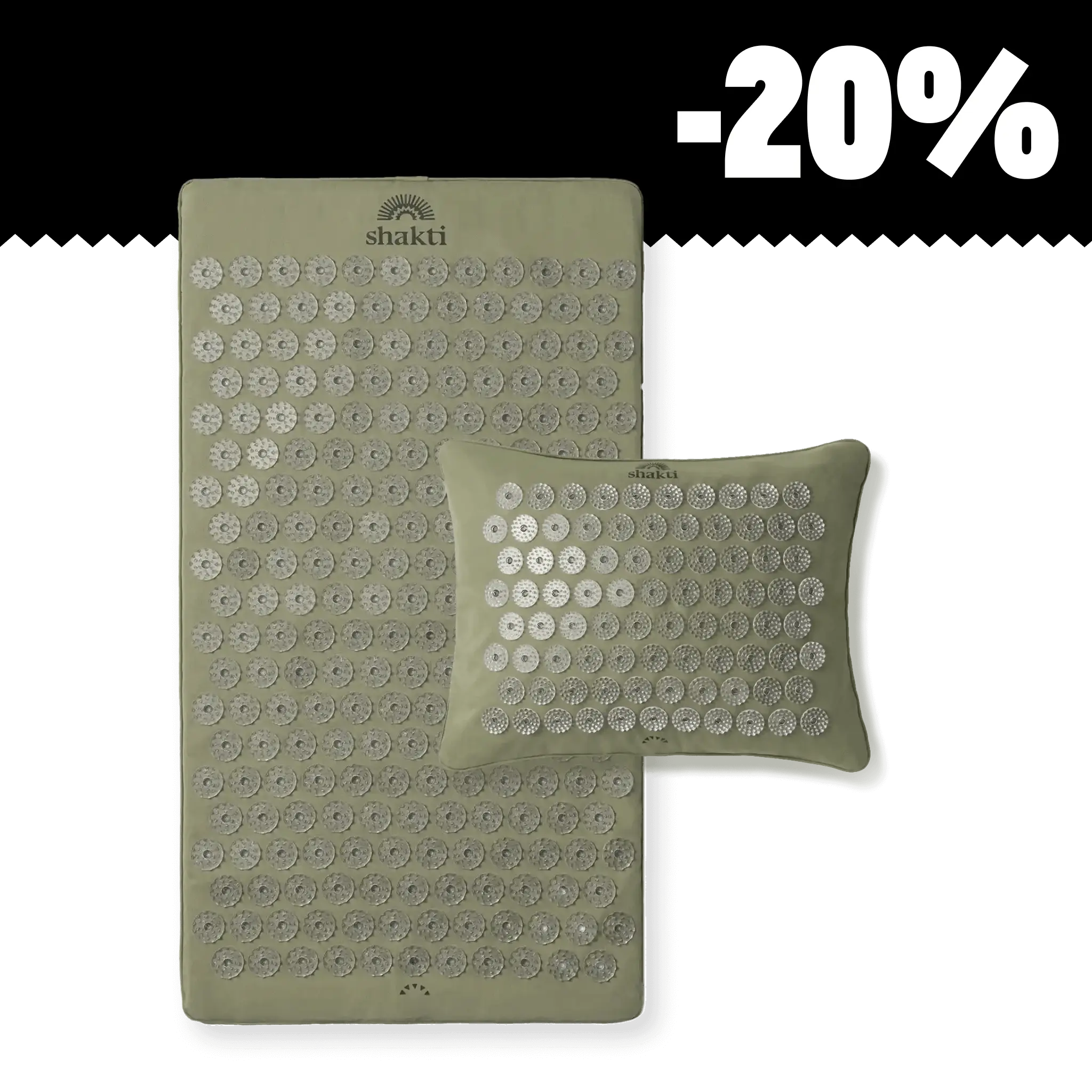Dizziness is a very unpleasant feeling that many people initially associate with inner ear or circulatory problems. But very often the cause of dizziness lies in the neck. Tension, blockages or poor posture in the cervical spine disrupt the sense of balance. This can lead to unsteadiness when walking and even dizziness or spinning vertigo.
If the cause of your symptoms is actually your neck, you can positively influence the feeling of dizziness with gentle support such as heat or various everyday exercises. In this article, you will find out where dizziness caused by neck problems actually comes from, how the symptoms manifest themselves and how you can become dizziness-free again by making small and conscious changes.
Content
1. can dizziness come from the neck?
2. typical causes of dizziness through the neck
3. symptoms: What does dizziness from the neck feel like?
4. dizziness from the neck: What to do?
Can dizziness come from the neck?
Dizziness can actually originate in the neck. The cervical spine is the most mobile part of your spine and connects your head to your torso. It consists of a total of seven vertebrae, which ensure the stability and mobility of your body. The vertebrae also protect sensitive structures such as the spinal cord and important nerve tracts.
Numerous blood vessels that supply the brain with oxygen run through the cervical spine. So if there are misalignments, blockages or muscular tension in this area, blood flow is impaired or nerve irritation is increased. This also has a direct effect on your sense of balance, which relies on the smooth interaction of your eyes, inner ear and nervous system. If the signals from the neck are transmitted to the brain incorrectly or with a delay, dizziness, light-headedness or unsteadiness when walking can occur. In this medical context, dizziness caused by the neck is therefore not uncommon.
What is cervicogenic vertigo?
From a medical point of view, this particular form of vertigo is caused by problems in the neck when disturbed or contradictory signals are sent from the cervical spine to the brain. The balance is literally thrown out of sync. Those affected describe a swaying feeling or a kind of spinning dizziness. The neck and shoulders as well as the upper part of the cervical spine are often painful and mobility is restricted.
Typical causes of dizziness through the neck
Dizziness caused by the neck rarely has a single cause. It is often caused by a combination of physical, postural or strain-related influences. These factors severely disrupt the sensitive interaction between the neck muscles, the cervical spine and the balance system. Even very small triggers impair the transmission of signals to the brain to such an extent that they trigger the unpleasant feeling of dizziness. If you are also affected by dizziness caused by the neck, it is important to know these triggers so that you can do something about them.
Dizziness due to neck tension and incorrect posture of the body
Neck tension always occurs when the muscles in this area contract over a long period of time and no longer relax completely. This causes the fibers to harden and the surrounding tissue is less well supplied with blood. In this condition, the muscles react more sensitively to stimuli. Their ability to control movements precisely decreases.
At the same time, tense muscles exert considerable pressure on sensitive nerves or blood vessels in the neck area. This irritation changes the information that is transmitted to the balance center in the brain. This results in dizziness through the neck, which is particularly pronounced when you move your head or remain in one position for a long time.
Causes of dizziness: Cervical spine as a trigger for balance disorders
Dizziness is just as frequently caused by cervical spine problems. Structural changes or functional disorders of the cervical spine in particular have a lasting effect on the sensitive area between the head and the torso.
Dizziness due to cervical spine: where it comes from
- Signs of wear and tear on the vertebral joints
- Intervertebral disc changes & dizziness
- Cervical spine blockages of individual vertebral segments
Such changes not only affect the mobility of the spine, but also disrupt the fine coordination between the muscles, nerves and balance system. It becomes particularly problematic when nerve tracts or blood vessels in the cervical spine area are constricted, slowing down or altering signal transmission. Affected people often notice that the symptoms increase with certain head postures or rotational movements. Long-term incorrect postures, which are often caused by ergonomically unfavorable workplaces, can also promote cervical spine problems and thus trigger or worsen dizziness.
Pinched nerve in the neck: dizziness as a result
If a nerve is pinched, surrounding muscles, ligaments or intervertebral discs press on a nerve pathway in the neck area. This compression triggers pain, tingling or numbness, but in some cases also dizziness. The nerves in the cervical vertebrae not only transmit the signals for movement and sensation, they are also involved in controlling the sense of balance.
If their function is impaired, the brain only receives incorrect or delayed information about the position of the head and body. The symptoms of dizziness caused by the neck are often exacerbated, particularly when turning or tilting the head.
Depending on the cause, the nerve irritation is either only temporary or lasts longer, for example if there is a bulging disc or pronounced muscle hardening that causes compression.
Stiff neck and dizziness: loss of balance due to restricted mobility
You probably know the painful feeling when your head can only be moved with pain and great effort. This is usually caused by severely tense muscles, shortened tendons or blockages in the vertebral joints. External influences such as draughts, cold or an unfavorable sleeping position also cause the muscles to harden and restrict their mobility - you get a stiff neck. However, this often not only has a localized effect, but also impairs your sense of balance. If you can no longer move your head freely and fluidly, the way in which sensory information from the neck, eyes and inner ear is transmitted to the brain changes. This altered signal processing then ultimately triggers the dizziness through the neck.
Symptoms: What does dizziness from the neck feel like?
Dizziness from the neck: symptoms are not usually present all the time. Rather, it becomes noticeable in certain situations. If you turn your head, stand up too quickly or sit in a fixed position for a long time, you may feel a slight swaying afterwards. Sometimes those affected also have the feeling that the ground beneath their feet seems unstable, the environment "tilts" for a moment and everything turns slightly. Neck pain, dizziness, light-headedness and swaying are also often accompanied by a diffuse pressure in the head, blurred vision or slight numbness in the shoulder/neck area. Neck pain, dizziness and nausea also often occur in combination.
It is also typical that the symptoms occur in waves and can intensify under stress.
Dizziness from the neck: What to do?
If dizziness is caused by the neck, the first thing to do is to identify the triggering factors and eliminate them. Gentle and supportive measures relieve the neck and bring the muscles back into balance. In this way, dizziness due to neck problems can also recede over time. We would like to introduce you to a few selected ways in which you can improve your dizziness. Important for all the methods presented: Always pay attention to your body's signals and get medical support if necessary.
Heat: relaxation for the muscles and nervous system
Heat has a particularly beneficial effect on neck complaints associated with dizziness. It dilates the blood vessels and thus increases blood circulation. Heat also helps the muscles to relax. When tense muscles relax again, the pressure on the nerves and blood vessels is relieved. This can significantly reduce the dizziness caused by neck problems.
The following heat sources have proven effective for dizziness caused by the neck:
- Hot water bottle or cherry stone cushion: place on the back of your neck, breathe deeply and enjoy the warmth
- Warm showers or baths: not only loosen up your muscles, but also allow you to relax completely
- Warming ointments or plasters: give off heat continuously and thus have a lasting effect
- Infrared lamps: warming rays penetrate deep into the tissue and support blood circulation
Heat not only has a physical effect, but also calms the autonomic nervous system. You literally relax body and soul and tension is automatically released.
Massages to loosen muscles and tissue
A massage in the neck area loosens hardened muscles and stimulates blood circulation. The mechanical pressure loosens adhesions in the tissue. This improves the mobility of the neck area and reduces the pressure on sensitive structures such as the nerve tracts. At the same time, the same effect is achieved as with heat treatment: massages have a relaxing effect on the nervous system, releasing messenger substances that relieve pain. Gentle, circular movements along the lateral and posterior neck muscles are particularly effective.
Acupressure: Gentle pressure against tension
Acupressure is a traditional method in which certain points on the body are stimulated using gentle pressure. It is based on the idea that various energy pathways run through your body, which are disturbed when you are tense. When this energy can flow freely again, the tension and, in your case, the dizziness, is released through the neck. Unlike a classic massage, however, the pressure is applied selectively in order to create targeted stimuli in the respective areas.
In addition to acupressure mats, Shakti Mat has also developed acupressure pillows specifically for use in the neck area. By resting your neck on the Pillow , you can gently stimulate the sensitive muscles and relieve the entire region evenly at the same time. Thanks to its ergonomic shape, the acupressure cushion adapts perfectly to any neck shape.
Use of the Shakti acupressure cushion for dizziness through the neck:
-
Take up a comfortable position
Lie on your back on a soft surface and place the Shakti acupressure cushion so that it fully supports the neck and upper shoulder area. -
Adjust the pressure
Most people find too much pressure uncomfortable during the first few applications. You can control this pressure individually by varying the surface you are lying on. The pressure is somewhat gentler on a soft mattress and more intense on a firmer surface. -
Relax and linger
Stay in this position for 10-20 minutes, breathing calmly and evenly. You will certainly feel a pleasant sensation of warmth and may also notice how your muscles gradually loosen up.
Do this exercise regularly so that you can permanently release tension and improve the mobility of your neck.
What helps with dizziness caused by cervical spine?
If the dizziness comes from the cervical spine, then there are usually various causes, as already described. You should therefore use different methods to make the dizziness go away. In addition to the heat treatments, massages and acupressure described above, you should also design your workplace ergonomically. Make sure you adopt a healthy sitting posture if you work a lot in the office and take regular exercise breaks. Avoiding poor posture is the most promising way to treat dizziness caused by the cervical spine.
Dizziness and neck: Exercises for cervicogenic dizziness
In the case of cervicogenic dizziness, the interaction between the cervical spine, the sense of balance and the nervous system is disturbed. You can stabilize these connections through various exercises. Regularity is also important here. Just a few minutes of daily exercise can have a positive effect.
Exercise 1: Gentle head rotation
Sit up straight and relax your shoulders. Slowly turn your head to the right until you feel a slight stretch in your neck and hold the position for 5 seconds. Then turn your head to the left just as slowly. Repeat the sequence 5-10 times per side.
Exercise 2: Shoulder circles
Stand upright with your arms hanging loosely at your sides. Slowly pull your shoulders up, then back and down to create a circular movement. Perform 10 circles backwards and then 10 circles forwards. This relieves tension in the neck and shoulders.
Conclusion: How to regain your balance with a relaxed neck
Can dizziness come from the neck? The answer is clearly yes! But the good news is that you can effectively do something about unpleasant feelings of dizziness by making small changes to your everyday life. Warmth, gentle relaxation techniques, acupressure and regular exercises can relieve tension and restore balance to the signal processing between your neck, sense of balance and brain. Listen to your body, feel what is good for you and your neck and improve your well-being in the long term.


















